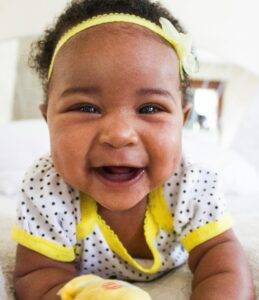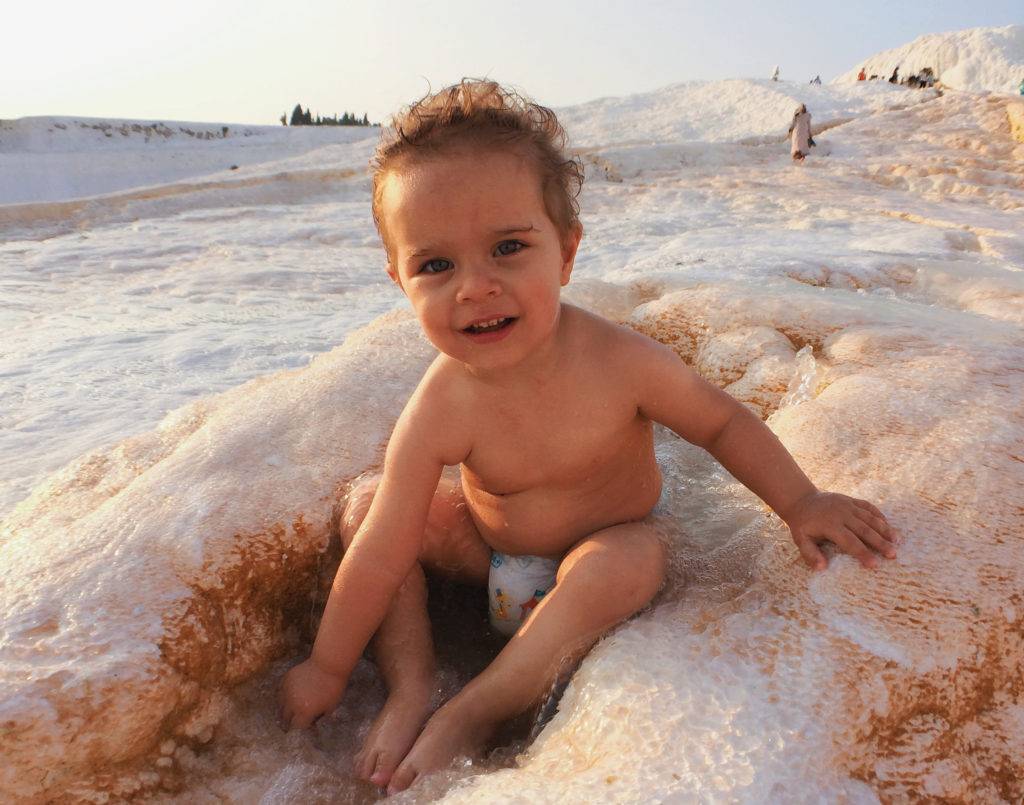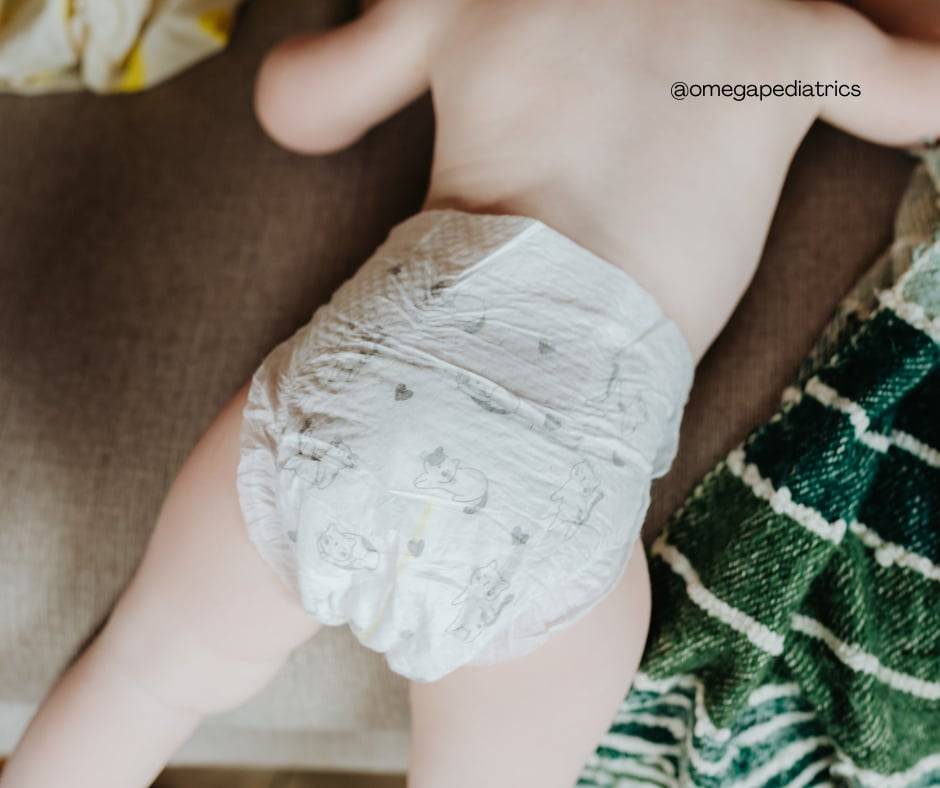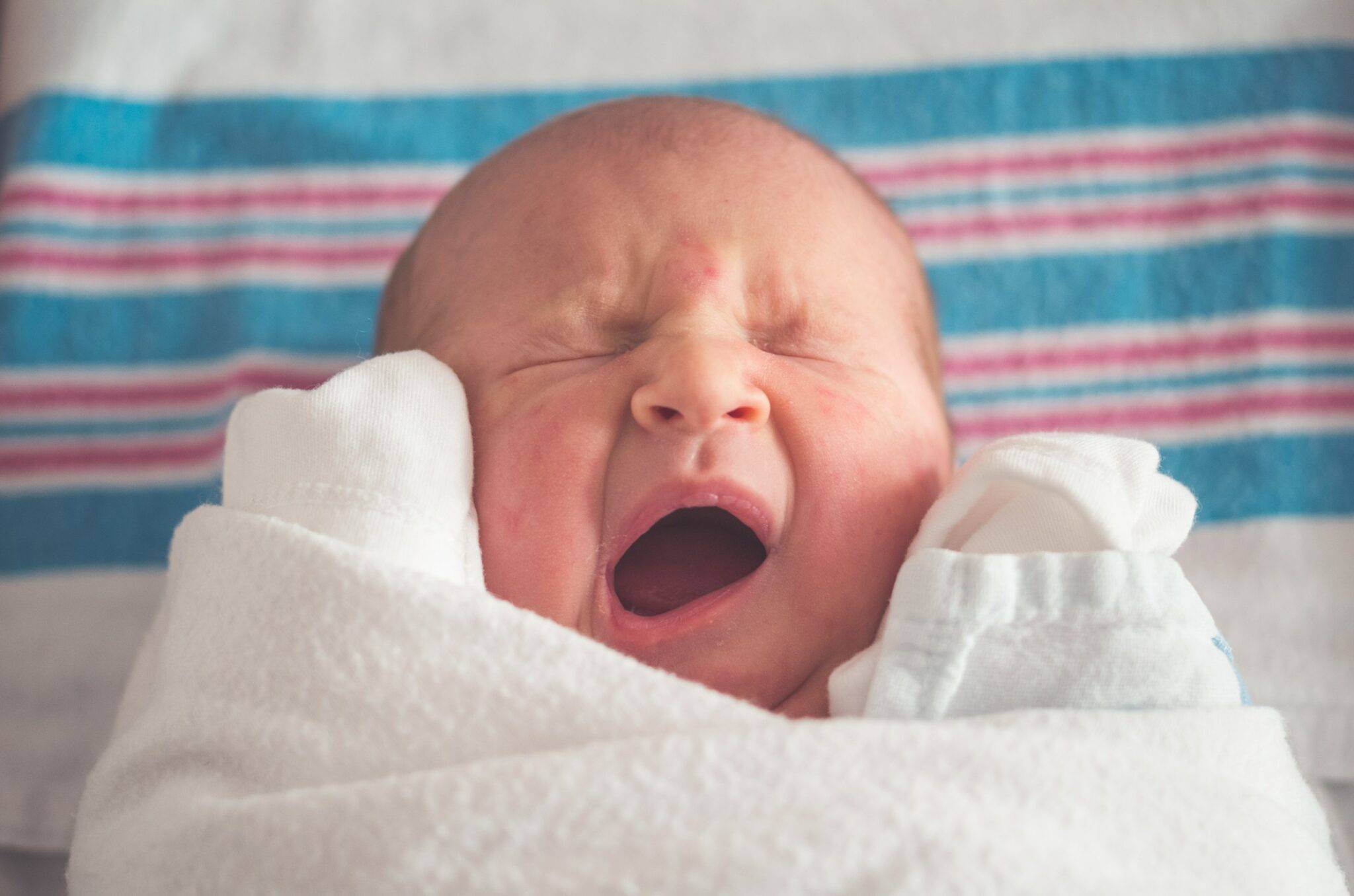As parents, watching your baby grow and achieve new milestones is exciting and sometimes a bit nerve-wracking. One of the most significant milestones in your baby’s early development is crawling. When your newborn baby can crawl, it signals your baby is becoming more independent and physically capable.
But the big question that many parents ask is, “When should my baby start crawling?” This article provides an overview of the crawling stage, including when babies typically start crawling, different crawling styles, how you can encourage this critical milestone, and what to do if your baby isn’t crawling yet. Let’s begin!
Newborn Baby Can Crawl: Essential in Development
Crawling is more than just a way for babies to get from one place to another. It plays a crucial role in their overall development. When babies crawl, they develop physical strength and enhance their coordination, balance, and cognitive skills.
Physical Development
Crawling helps strengthen the muscles in your baby’s arms, legs, back, and neck. These muscles are essential for other milestones, such as sitting up, standing, and walking. Also, crawling aids to develop fine and gross motor skills.
Fine motor skills involve the use of smaller muscles, like those in the fingers and hands, while gross motor skills involve larger muscle groups, such as those used for walking or jumping.
Cognitive Development
As babies crawl, they learn to judge distances and develop spatial awareness. This means they understand where objects are to themselves and how to navigate around obstacles. Crawling also encourages problem-solving skills as your baby figures out how to reach toys or move around objects in their path.
Social and Emotional Development
Crawling gives babies independence and achievement. As they explore their environment, they learn cause and effect, such as realizing that moving towards a toy allows them to grab it. This independence builds self-confidence. Also, crawling is a social activity; babies seek out caregivers or siblings, promoting social interaction.
When Does a Newborn Baby Can Crawl?
Most babies start crawling between 6 and 10 months of age–an average range. A few babies might skip crawling altogether, opting to go straight from sitting up to pulling up to stand and then walking.
- Early Crawlers: Babies who start crawling early, around 5 or 6 months, have spent time on their tummies, which strengthens their muscles to prepare for crawling. These babies are more physically active or have strong upper body muscles, allowing them to crawl sooner than their peers.
- Late Crawlers: On the other hand, some babies don’t start crawling until 10 or 11 months. This is due to various factors, such as a more cautious temperament, less time spent on the floor, or being contented to sit and observe rather than explore. Late crawling doesn’t indicate a developmental delay; but a unique timeline every baby follows.
Crawling Styles: What to Expect
When your baby starts crawling, don’t be surprised if their technique doesn’t look exactly like what you expect. Babies develop different styles of crawling, and each is perfectly normal. Here’s a look at the various crawling methods your baby might use:

- Classic: The most common form of crawling is when your baby moves forward on their hands and knees, using alternating movements. For instance, they will move their right hand and left knee forward simultaneously, followed by their left hand and right knee. This coordinated movement builds the strength and balance needed for walking.
- Commando: Also known as the army crawl, your baby lies flat on their stomach and use their elbows to drag themselves forward. The commando crawl is often an early stage of crawling since it requires less strength than the classic crawl.
- Bear: Your baby keeps their elbows and knees straight, moving forward on their hands and feet likened to a bear. This style is more challenging and usually occurs later, once your baby has developed enough strength and coordination.
- Crab: Your baby moves sideways or even backward, like a crab, instead of forward. This may be due to a preference for moving in a different direction or a stronger set of muscles on one side of the body.
- Bottom Scoot: Some babies skip traditional crawling styles altogether and prefer to scoot on their bottom. They push themselves forward with their legs while sitting upright. This style happens in babies with strong core muscles or who are less inclined to be on their hands and knees.
Each crawling method is a normal and healthy development. Over time, most babies develop the classic crawl, but some stick on their unique style until they begin to walk.
Factors That Influence When Newborn Baby Can Crawl
Several factors influence a baby to start crawling, helping parents to better support their baby’s development and know what to expect.
- Muscle Strength and Physical Development: Crawling requires significant muscle strength, especially in the arms, legs, and core. Babies who have strong muscles in these areas begin crawling earlier. Tummy time is one of the best ways to help your baby build this strength. Babies who have had plenty of tummy time are usually quicker to develop the necessary muscles for crawling.
- Temperament and Personality: Babies who are curious or adventurous are more motivated to explore their surroundings, leading them to start crawling sooner. On the other hand, a more content or cautious baby takes their time, preferring to observe their environment rather than dive into it.
- Environment: A baby who has plenty of space to move around and explore is likely to start crawling sooner. Conversely, a baby who spends much time in confined spaces, such as a crib, playpen, or swing, has fewer opportunities to practice the movements that lead to crawling.
- Support from Caregivers: Parental and caregiver support is crucial in helping your baby reach developmental milestones like crawling. Encourage tummy time, provide space for exploration, and use toys to motivate movement to help your baby develop the skills needed to crawl.
Babies who receive positive reinforcement and encouragement are more confident in trying new things, including crawling.
How to Encourage Your Baby to Start Crawling

If you’re eager to see your baby start crawling, there are several things you can do to encourage this milestone. Here are some tips to support your baby’s crawling journey:
- Increase Tummy Time: Tummy time is one of the most effective ways to help your baby build the strength needed for crawling. Aim to give several short tummy time sessions each day, gradually increasing the duration as they get stronger. Make it more enjoyable by lying on the floor with your baby.
- Create a Safe and Stimulating Environment: Ensure your baby has a safe and spacious environment where they practice crawling. Remove any sharp objects or small items that pose a choking hazard. Lay down a soft blanket or play mat to cushion their movements. Place toys or interesting objects out of your baby’s reach to motivate them to move forward.
- Use Toys to Encourage Movement: Babies are naturally curious and love to reach for toys. Place a favorite toy out of reach during tummy time to encourage them to move toward it. Roll a ball in front or place a toy with lights and sounds to capture their attention and motivate movement.
- Engage in Interactive Play: Get down on the floor and engage in playtime with your baby. Use encouraging words, clapping, and smiles to motivate them to move. Get on your hands and knees and demonstrate crawling for your baby. Babies learn by imitation, so seeing you crawl encourages them to try it themselves.
Check out these articles for further insights on related topics: Tummy Time: Activities and Tips for a Happy and Strong Baby and Power of Play: Boost Your Baby’s Development
Baby Isn’t Crawling Yet: What To Do
It’s natural to feel concerned if your baby hasn’t started crawling within the age range, especially if you see other babies around the same age already on the move. Every baby develops at their own pace. Here are some steps you can take if your baby isn’t crawling yet:
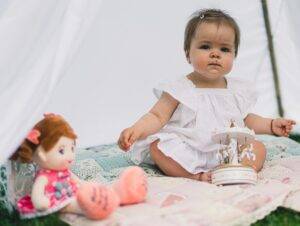
- Observe Other Developmental Milestones: If your baby isn’t crawling but is meeting other developmental milestones, such as rolling over, sitting up, or babbling, they are likely on track. Some babies skip crawling and go straight to pulling up and walking. As long as your baby is showing progress in other areas of development, there’s no need to worry.
- Talk to Your Pediatrician: If you’re concerned about your baby’s development, talk to your pediatrician. They assess your baby’s motor skills and overall development. In some cases, they recommend additional tummy time or specific exercises so your baby develops strength and coordination for crawling.
- Avoid Comparing Your Baby to Others: It’s easy to fall into the trap of comparing your baby to others, but this leads to unnecessary stress and worry. Every baby is unique and follows their own developmental timeline. Focus on your baby’s progress and celebrate their achievements, no matter when they happen.
- Encourage, But Don’t Pressure: Encouragement is key, but not to pressure your baby. Babies sense stress and are less confident if they’re pressured. Create a positive and supportive environment where your baby explores at their own pace.
The Transition from Crawling to Walking
Crawling is the beginning of your baby’s journey toward walking. Once your baby masters crawling, they will soon explore other forms of movement, such as pulling up to stand, cruising along furniture, and eventually taking their first steps. Here’s what you can expect as your baby transitions from crawling to walking:
- Pulling Up to Stand: Once your baby is comfortable crawling, they will pull up to stand using furniture, toys, or your legs for support. This stage occurs between 9 to 12 months. Pulling up strengthens leg muscles and develops the balance needed for walking.
- Cruising: After your baby learns to stand, they will begin “cruising,” or walking while holding onto furniture for support. Cruising is an important stage since it allows your baby to practice walking with little stability. They shift their weight from one foot to the other and develop confidence for independent walking.
- Taking Those First Steps: Most babies take their first independent steps between 12 to 15 months, though some start earlier or later. Walking is a major milestone that combines strength, balance, and coordination. It’s also a milestone that opens up a whole new world of exploration for your little one.
The Bigger Picture: How Crawling Fits into Your Baby’s Overall Development

Crawling is a critical milestone, but it’s just one piece of the puzzle when it comes to your baby’s overall development. As your baby grows, they will achieve many milestones in language, social skills, and emotional development. Here’s how crawling fits into the bigger picture:
- Language Development: While crawling, babies are exposed to more opportunities for communication. They crawl to express desire, such as wanting to be picked up or reaching for a toy. This increased interaction stimulates language development as babies understand the relationship between their actions and the responses they receive from caregivers.
- Social Interaction: Crawling allows babies to engage more actively in their environment, including interacting with other children or adults. This increased social interaction develops social skills and emotional bonds. Babies respond to social cues, such as smiles or claps, and they understand the concept of shared play.
- Emotional Growth: As babies crawl and explore, they develop independence and confidence. They learn they can move away from caregivers and explore new spaces, but also they return for comfort and security. This balance between exploration and attachment is crucial for healthy emotional development.
Newborn Baby Can Crawl: Celebrate Your Baby’s Journey
Crawling is an exciting and significant milestone in your baby’s development, and every baby follows a unique path. Whether your newborn baby can crawl at 6 months or 10 months, or skips crawling altogether, what matters is that they’re healthy, happy, and developing at their own pace.
Every milestone, from the first time your baby lifts their head to their first steps, is a moment to celebrate. Enjoy each stage of your baby’s development, and take pride in the role you play in helping them grow and thrive.

